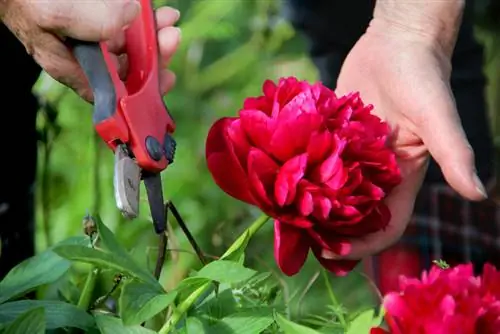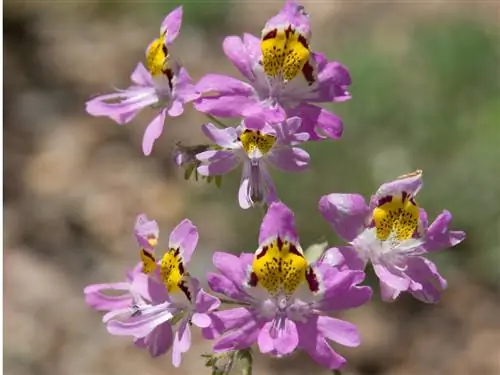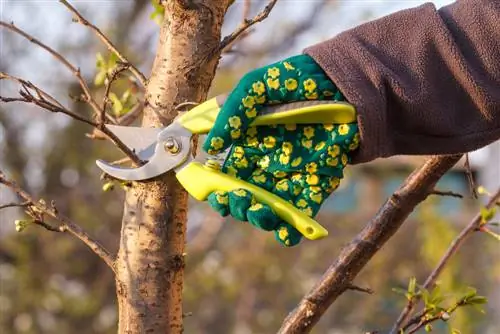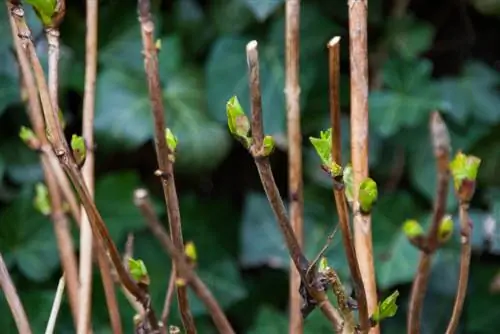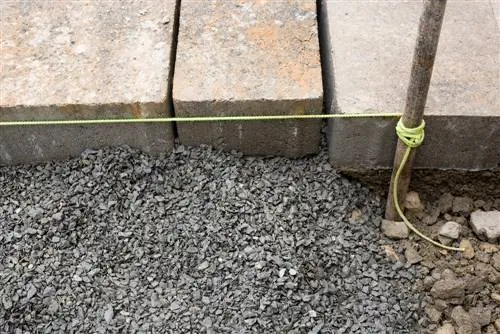- Author admin [email protected].
- Public 2023-12-16 16:46.
- Last modified 2025-01-23 11:21.
Farmer Jasmine boasts lavish flowering wood that is bursting with vitality for up to eight years. This reduces pruning care to sporadic thinning pruning. Read this guide to learn when and how to expertly prune your opulent garden jasmine.
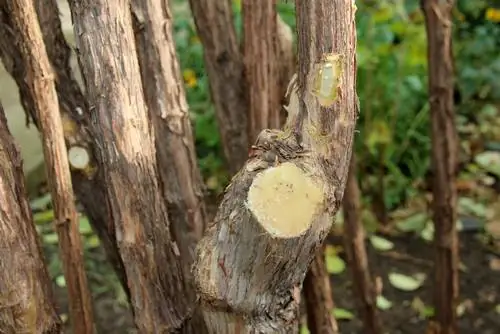
How do you cut farmer's jasmine correctly?
Farmer's jasmine (Philadelphus coronarius) should be thinned out every two to three years in February when the weather is frost-free. Remove dead, weak and cross-growing branches, cut off old ground shoots at the base and leave young shoots for light-flooded growth.
Occasionally thin out farmer's jasmine - this is how it works
Farmer's jasmine (Philadelphus coronarius) is one of the native pipe bushes. The picturesque flowering shrub impresses with its upright, bushy stature, reliable winter hardiness and abundance of flowers from May to June. Garden jasmine lays the buds for the next flower festival last year. Annual pruning measures could significantly affect the floral development. For this reason, pruning care is limited to thinning pruning at intervals of two to three years. How to do it right:
- The best cutting date is in February when the weather is frost-free
- Thin out dead, weak and cross-growing branches
- Cut off some over-aged ground shoots with rough, furrowed bark at the base
- Leave the appropriate number of young ground shoots standing
- Cut off excess scaffolding shoots at ground level
Given a growth rate of up to 50 centimeters per year, vital scaffold shoots can lean massively and branch out like a broom at the tips of the shoots. This is no reason to thin out the active flowering wood. In this case, a lead cut solves the problem. Look for an unbranched, strong side shoot at the bottom. From now on, this drive takes on the function of a new scaffolding drive. Where old, rough and young, smooth wood fork, use the pruning shears (€38.00 on Amazon).
Be aware of the risk of confusion
Calling the European pipe bush as farmer's jasmine causes considerable confusion among beginners in pruning care as it is confused with real jasmine. Real jasmine thrives as a frost-sensitive climbing shrub that is pruned vigorously every year after flowering. If you cut farmer's jasmine in the same way, you will remove a large part of the flower buds that have already formed.
Rejuvenate old farmer's jasmine - this is how it works
Without the occasional thinning cut, farmer's jasmine turns into a dense, impenetrable bush. Unsightly baldness appears from the inside because there is no longer any way for the sun's rays to get through. This is no reason to clear the naturally flowering garden jasmine. A radical rejuvenation cut breathes new life into the old flowering bush. How to proceed correctly step by step:
- Best time is in late winter
- First saw off all dead scaffolding shoots at ground level
- Cut back remaining ground shoots by half to two thirds
The vigorous pruning activates a multitude of sleeping eyes from which the old wood sprouts. First, give this growth a free hand in order to better assess the quality. In February of the following year, select seven to twelve promising ground shoots as a new framework. All remaining specimens must give way for light-flooded growth.
Tip
Farmer jasmine also looks great in your garden as a picturesque hedge. If you already own a vital specimen, simply grow the appropriate number of young bushes yourself. To do this, cut semi-lignified cuttings 10 to 15 cm long in early summer. Rooting progresses quickly in the cultivation pot with a transparent hood.


